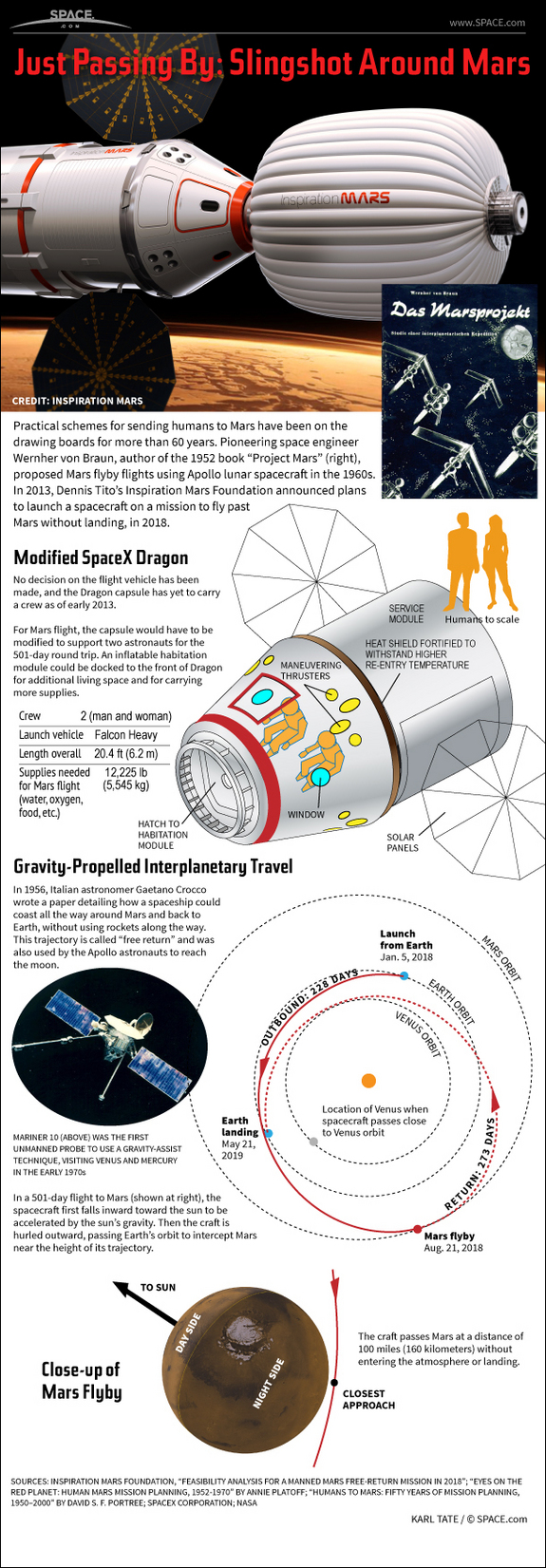Practical schemes for sending humans to Mars have been on the drawing boards for more than 60 years. Pioneering space engineer Wernher von Braun, author of the 1952 book “Project Mars,” proposed Mars flyby flights using Apollo lunar spacecraft in the 1960s. In 2013, Dennis Tito’s Inspiration Mars Foundation announced plans to launch a spacecraft on a mission to fly past Mars without landing, in 2018.
Gallery: Inspiration Mars – Private Mars Flyby Mission Unveiled
For Mars flight, the capsule would have to be modified to support two astronauts for the 501-day round trip. An inflatable habitation module could be docked to the front of Dragon for additional living space and for carrying more supplies.
The crew of two would probably consist of a middle-aged married couple. The danger of radiation damage during the flight would suggest that a man and a woman who are past reproductive age would be preferable.

Source SPACE.com: All about our solar system, outer space and exploration
The Dragon capsule would be lofted into space by the Falcon Heavy booster. The 2018 launch window represents a rare opportunity for a fast trip of only 501 days.
The flight path is of the “gravity-assist” type, where the spacecraft falls along its course without the need for major rocket engine firings.
In 1956, Italian astronomer Gaetano Crocco wrote a paper detailing how a spaceship could coast all the way around Mars and back to Earth, without using rockets along the way. This trajectory is called “free return” and was also used by the Apollo astronauts to reach the moon.
Mariner 10 was the first unmanned probe to use a gravity-assist technique to visit Venus and Mercury in the early 1970s.
The plan for the Inspiration Mars flight calls for the spacecraft to first fall inward toward the sun to be accelerated by the sun’s gravity. Then the craft is hurled outward, passing Earth’s orbit to intercept Mars near the height of its trajectory.
- The Boldest Mars Missions in History
- Mars Explored: Landers and Rovers Since 1971
- Giant Leaps: Top Milestones of Human Spaceflight
- Photos: The First Space Tourists








